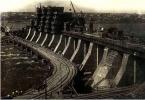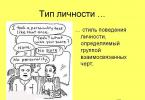Volumes of bodies
Compiled by: Olesya Viktorovna Yuminova, mathematics teacher at Krasnoyarsk Agrarian College

Lesson objectives:
Introduce the concept of volume of bodies, its properties, units of measurement of volume. Repeat with students the formulas for finding the volume of a parallelepiped or cube. Introduce students to the volumes of a straight prism, pyramid, cylinder and cone, guided by visual and illustrative considerations.

Just as all arts gravitate towards music, all sciences gravitate towards mathematics. D. Santayana

Geometry is the art of reasoning correctly on incorrect drawings. Poya D.

Area The area of a polygon is the positive value of the part of the plane that the polygon occupies.
Volume The volume of a body is the positive value of that part of space occupied by a geometric body.

Properties of areas: 1. Equal polygons have equal areas
Properties of volumes: 1. Equal bodies have equal volumes
F1
F2
F1
F2

2. If a polygon is made up of several polygons, then its area is equal to the sum of the areas of these polygons. SF=SF1+SF2+SF3+SF4
2. If a body is made up of several bodies, then its volume is equal to the sum of the volumes of these bodies. VF=VF1+VF2

Area The unit of measurement for areas is a square, the side of which is equal to the unit of measurement for segments. 1 km2, 1 m2, 1 dm2, 1 cm2, 1 mm2, 1 a, 1 ha, etc.
Volume For the unit of measurement of volumes, we take a cube, the edge of which is equal to the unit of measurement of segments. A cube with an edge of 1 cm is called a cubic centimeter and is designated cm3. Similarly, 1 m3, 1 dm3, 1 cm3, 1 mm3, etc. are determined.
1
1
1
1
1

Area Geometric figures that have equal areas are called equal.
Volume Equal-sized bodies are those whose volumes are equal.
VF=VF1
F2
F1
F2
F1
SF=SF1

In stereometry, the volumes of polyhedra and the volumes of bodies of revolution are considered.

Volume of a rectangular parallelepiped:
a-length b-width c-height V=a.b.c Sbas= a.b V=Sbas.H

Cube volume:
V=a3 V=Sbas.H
Sbas=a2

Volume of a straight prism:
V=Sbas.H
Vparal=Smain.H Smain=2.SABC By the property of volumes Vparal=2.SABC.H V prisms = (V parall) :2 V prisms = (2.SABC.H): 2

Pyramid volume:
For the 2nd and 3rd pyramids - SC - common, tr CC1B1 = tr CBB1 For the 1st and 3rd pyramids - CS - common, tr SAB = tr BB1S V1=V2=V3 V prisms= 3 V pyramids Vpyramids=1 V prisms 3 Vpyramids=1 Sbas.H 3
Let's build the ABCS pyramid to a prism. The completed prism will consist of 3 pyramids - SABC, SCC1B1, SCBB1

Cylinder volume:
Designations: R - radius of the base H - height L - generatrix L=H V - volume of the cylinder
V = PR2H - volume V= Sbas.H Sbas= PR2

Cone:
NOTATION: R - radius of the base L - generatrix of the cone H - height V - volume V = 1Р2Н 3 - volume

This is interesting:
In geology, there is the concept of "fan". This is a landform formed by the accumulation of clastic rocks carried by mountain rivers onto a foothill plain or into a flatter, wider valley.
In biology there is the concept of "cone of growth". This is the tip of the shoot and root of plants, consisting of cells of educational tissue.
“Cones” is the name given to a family of marine mollusks of the subclass Perezhbranchs. The bite of cones is very dangerous. Deaths are known.
In physics, the concept of “solid angle” is encountered. This is a cone-shaped angle cut into a ball.

Test your knowledge:
Formulate the concept of volume. Formulate the basic properties of volumes of bodies. Name the units for measuring the volume of bodies. What is the formula for measuring the volume of a rectangular parallelepiped; - cube volume; - volume of a straight prism; - volume of the pyramid; - volume of the cylinder and volume of the cone. Will the volume of a cylinder change if the radius of its base is increased by 2 times and its height is decreased by 4 times? V = PR2H V=P(2R)2 .H =P4R2. H = PR2. H 4 4 The bases of two pyramids with equal heights are quadrilaterals with correspondingly equal sides. Are the volumes of these pyramids equal? What solids does the body obtained by rotating an isosceles trapezoid around a larger base consist of?

Homework:
Learn formulas for volumes of bodies, definitions. No. 648(a,c), No. 685, No. 666(a,c)

Reinforcing the material covered:
Problem No. 1 Three brass cubes with edges of 3 cm, 4 cm and 5 cm are melted into one cube. What edge does this cube have? + + =
THE CONCEPT OF VOLUME
THE CONCEPT OF VOLUME
S is a positive quantity, the numerical value of which has the following properties:
V is a positive quantity, the numerical value of which has the following properties:
1. Equal figures have equal areas.
2. If a figure is made up of several figures, then its area is equal to the sum of the areas of these figures.
3. The unit of measurement for area is usually a square with a side equal to the unit of measurement for segments.
THE CONCEPT OF VOLUME
Two bodies are said to be equal if they can be combined by superposition
S is a positive quantity, the numerical value of which has the following properties:
V is a positive quantity, the numerical value of which has the following properties:
1. Equal figures have equal areas.
Equal bodies have equal volumes.
2. If a figure is made up of several figures, then its area is equal to the sum of the areas of these figures.
3. The unit of measurement for area is usually a square with a side equal to the unit of measurement for segments.
THE CONCEPT OF VOLUME
The volume of the entire body is the sum of the volumes of its constituent bodies.
S is a positive quantity, the numerical value of which has the following properties:
V is a positive quantity, the numerical value of which has the following properties:
1. Equal figures have equal areas.
Equal bodies have equal volumes.
2. If a figure is made up of several figures, then its area is equal to the sum of the areas of these figures.
If a body is composed of several bodies, then its volume is equal to the sum of the volumes of these bodies.
3. The unit of measurement for area is usually a square with a side equal to the unit of measurement for segments.
The unit of volume measurement is usually a cube, the edge of which is equal to the unit of measurement of segments.
THE CONCEPT OF VOLUME
Volume of a rectangular parallelepiped
Theorem: the volume of a rectangular parallelepiped is equal to the product of its three dimensions. a,b,c – measurements of a rectangular parallelepiped. V = abc. Corollary 1: the volume of a rectangular parallelepiped is equal to the product of the area of the base and the height. V = abc=Sh.
Corollary 2.
The volume of a right prism whose base is a right triangle is equal to the product of the area of the base and the height. V = SABCh.
Literature:
Geometry 10 – 11: Textbook. for educational institutions / L.S. Atanasyan et al., Enlightenment 2003. Study of geometry in grades 10 - 11: Method. recommendations for the textbook / S.M. Sahakyan, V.F. Butuzov, Enlightenment, 2001
Performed:
Pakhomova E.A. mathematics teacher at municipal educational institution secondary school Taiga
Slide 2
Lesson objectives:
Introduce the concept of volume of bodies, its properties, units of measurement of volume. Repeat with students the formulas for finding the volume of a parallelepiped or cube. Introduce students to the volumes of a straight prism, pyramid, cylinder and cone, guided by visual and illustrative considerations.
Slide 3
Just as all arts gravitate towards music, all sciences gravitate towards mathematics. D. Santayana
Slide 4
Geometry is the art of reasoning correctly on incorrect drawings. Poya D.
Slide 5
Area The area of a polygon is the positive value of the part of the plane that the polygon occupies. Volume The volume of a body is the positive value of that part of space occupied by a geometric body.
Slide 6
Properties of areas: 1. Equal polygons have equal areas Properties of volumes: 1. Equal bodies have equal volumes F1 F2 F1 F2
Slide 7
2. If a polygon is made up of several polygons, then its area is equal to the sum of the areas of these polygons. SF=SF1+SF2+SF3+SF4 2. If a body is made up of several bodies, then its volume is equal to the sum of the volumes of these bodies. VF=VF1+VF2 F2 F3 F1 F4
Slide 8
Area The unit of measurement for areas is a square, the side of which is equal to the unit of measurement for segments. 1 km2, 1 m2, 1 dm2, 1 cm2, 1 mm2, 1 a, 1 ha, etc. Volume For the unit of measurement of volumes, we take a cube, the edge of which is equal to the unit of measurement of segments. A cube with an edge of 1 cm is called a cubic centimeter and is designated cm3. Similarly, 1 m3, 1 dm3, 1 cm3, 1 mm3, etc. are determined. 1 1 1 1 1
Slide 9
Area Geometric figures having equal areas are called equal-area. Volume. Bodies whose volumes are equal to VF=VF1 F2 F1 F2 F1 SF=SF1 are called equal-area.
Slide 10
In stereometry, the volumes of polyhedra and the volumes of bodies of revolution are considered.
Slide 11
Volume of a rectangular parallelepiped:
a-length b-width c-height V=a.b.c Sbas=a.b V=Sbas.H a c c
Slide 12
Cube volume:
V=a3 V=Sbas.H a a a a Sbas=a2
Slide 13
Volume of a straight prism:
V=Smain.H Vparal=Smain.H S main=2.SABC By the property of volumes Vparal=2.SABС.H V prisms = (V paral) :2 V prisms = (2.SABC.H): 2
Slide 14
Pyramid volume:
The 2nd and 3rd pyramids have SC - common, trCC1B1= trCBB1 The 1st and 3rd pyramids have CS - common, trSAB= trBB1S V1=V2=V3 Vprisms= 3 V pyramids Vpyramids=1 V prisms 3 Vpyramids=1 Sbas.H 3 We will complete the construction ABCS pyramid to prism. The completed prism will consist of 3 pyramids - SABC, SCC1B1, SCBB1
Slide 15
Cylinder volume:
Designations: R - radius of the base H - height L - generatrix L=H V - volume of the cylinder V = PR2H - volume V= Sbas.H Sbas= PR2 L
Slide 16
Cone:
NOTATION: R - radius of the base L - generatrix of the cone H - height V - volume V = 1Р2Н 3 - volume
Slide 18
Test your knowledge:
Formulate the concept of volume. Formulate the basic properties of volumes of bodies. Name the units for measuring the volume of bodies. What is the formula for measuring the volume of a rectangular parallelepiped; - cube volume; - volume of a straight prism; - volume of the pyramid; - volume of the cylinder and volume of the cone. Will the volume of a cylinder change if the radius of its base is increased by 2 times and its height is decreased by 4 times? V = PR2HV=P(2R)2 .H =P4R2. H = PR2. H 4 4 The bases of two pyramids with equal heights are quadrilaterals with correspondingly equal sides. Are the volumes of these pyramids equal? What solids does the body obtained by rotating an isosceles trapezoid around a larger base consist of?
Slide 19
Homework:
Learn formulas for volumes of bodies, definitions. No. 648(a,c), No. 685, No. 666(a,c)
Slide 20
Reinforcing the material covered:
Problem No. 1 Three brass cubes with edges of 3 cm, 4 cm and 5 cm are melted into one cube. What edge does this cube have? + + = a1 a2 a3 ?
Slide 21
Solution: VF=VF1+VF2+VF3 VF1=33 =27 (cm3) VF2=43 =64 (cm3) VF3=53 =125 (cm3) VF=27+64 +125=216 (cm3) VF=a3 a3= 216 (cm3) a= 6 (cm) Answer: the edge of the cube is 6 cm.
In this presentation for 11th grade we will look at the concept of volume of a body, properties of volumes of bodies, and solve several problems.

Previously, students were familiar with calculating the area of geometric shapes. Area is the size of a figure that is on the same plane.
If a figure lies not in one plane, but in space, then, speaking about its size, we move on to the concept of volume. The presentation on the third slide illustrates three-dimensional bodies of various shapes and volumes: an amphora, a barrel, a bucket. The author introduces the concept of a cubic centimeter - look at the following figure: 1 cm on a straight line, 1 square centimeter as a unit of area and 1 cubic centimeter as a unit of body volume are shown. 1 cubic centimeter is characterized by three body dimensions: length, width and height, which is clearly shown in the figure.


1) The volumes of equal bodies are equal.
2) If a body is composed of several bodies, then its volume is equal to the sum of the volumes of these bodies. The figure shows a figure consisting of two figures F and Q. Then the volume of this figure can be written as V = V F + V Q.
3) If one body contains another, then the volume of the first body is not less than the volume of the second. The figure shows a cube with side a = 1cm. Inside the cube there is a cube with a side of 1/5 cm. The volume of the first cube is V = a 3 = 1 cm 3. The volume of the cube inside is equal to V 1 = (1/5) 3 = 1/125 cm 3.
We found that 1 cm 3 > 1/125 cm 3, i.e. V>V 1.


Pay attention to the corollary indicated on the next slide: the volume of a cube with edge 1/n is equal to 1/n 3. A proof of this statement is given. Suppose we are given a cube with side a = 1 cm and a cube located inside the first cube with side a 1 = 1/n cm. The volume of the first cube is equal to V = a 3 = 1 cm 3. The volume of the cube inside is V 1 = (1/n ) 3 = 1/n 3 cm 3 . Q.E.D.


Let's apply the properties of volumes of bodies in practice when solving problems.
Problem 1. Given a body consisting of two parallelepipeds located one above the other (see figure). The width, length and height of these parallelepipeds are known: a c, b c, h c and a 3, b 3, h 3. It is necessary to find the volume of the entire body. Let's find the volume of the first parallelepiped V c = a c x b c x h c = 36. By analogy, let's calculate the volume of the first parallelepiped V 3 = a 3 x b 3 x h 3 = 3. Find the volume of the entire body using the second property of volumes of bodies: V = V c + V 3 = 39 .


Problem 2. The figure shows a brick whose dimensions are known: length 250, width 120, height 65. Given the dimensions of the opening are 2200 x 120 x 700. It is necessary to determine how many bricks will fit in this opening. Let's find the volume of one brick V 1 = a 1 x b 1 x h 1. Let's find the volume of the opening using a similar formula V 2 = a 2 x b 2 x h 2. Then V 2 / V 1 will indicate the number of bricks that fit into the opening. Note - we may not be able to find the volume of the brick and the opening separately, because There is no such task, but immediately calculate the number of bricks V 2 / V 1.
This presentation can be used by the teacher in the classroom, and can also be worked on independently by students.




